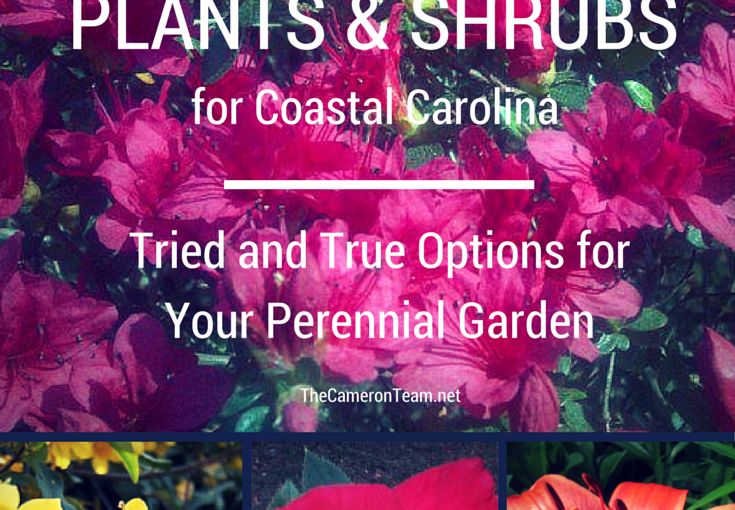When I moved to North Carolina from Michigan, I had big plans for my garden. The climate in the Mitten State was 8 months of freezing cold and snow, followed by a hot, humid summer. Gardening there wasn’t impossible: I actually had pretty good luck. I had an acre garden with vegetables, flowers, and a pond, but I envisioned so many possibilities in a longer growing season.
Over the course of one year in North Carolina, I learned that this environment was a totally different ball game. The reality first hit me when I went outside to weed my first month and ended up kneeling on a small rogue cactus. No idea how it got there, but it was about 3 inches tall and doing quite well. That should have been a good sign of my coming struggles.
You see, my yard is sand with a layer of dirt on top. That make sense seeing we’re on the coast, but I never anticipated that the lovely dry rock bed feature I installed the first year would completely disappear, swallowed whole by my front yard. If you looked out there now, you would never believe that there were once 4 bags of stone laid out in this short 4 foot by 1 foot area. Matter-of-fact, finding a rock on my property is like finding gold. What a change from living on top of limestone!
Needless to say, I’ve gone through a lot of plants trying to figure out what will grow in my yard. You can’t just go by zones, but soil needs as well, and that isn’t always a guarantee. When it’s dry, it’s REALLY dry (sand drains well) and, when it rains, that doesn’t mean the water will be enough to quench the plant’s thirst, because it disappears so quickly. Then, there are the tropical storms and hurricanes, when everything gets absolutely DRENCHED.
It’s been a learning curve, believe me. So, I thought it would be a great idea to share this vast knowledge I’ve acquired in my struggles….There was a bit of sarcasm in that sentence. I’m still quite dumb in many aspects of plant care, but I did learn a bit through experience while gardening here and working two seasons in a greenhouse in Michigan.
If you’re moving to Coastal Carolina or are new here and are looking to start a garden, here are 15 perennial plants and shrubs that have proved their hardiness in this area:
-
- Azalea Bushes. Let’s get the obvious out of the way first. The
 re’s a reason why Wilmington is home to the North Carolina Azalea Festival. This bush rocks! I’ve watched my neighbors cut theirs back to practically nothing and the bushes were back blooming the very next spring. Traditionally, they come in varying shades of white, red, pink, and purple, but I also stumbled across a Yellow Azalea this year, and I’m dying to try it out.
re’s a reason why Wilmington is home to the North Carolina Azalea Festival. This bush rocks! I’ve watched my neighbors cut theirs back to practically nothing and the bushes were back blooming the very next spring. Traditionally, they come in varying shades of white, red, pink, and purple, but I also stumbled across a Yellow Azalea this year, and I’m dying to try it out. - Daylilies. These are darn near indestructible. I’ve had mine through multiple tropical storms, hurricanes, and droughts, and they keep coming back beautiful every year. There’s a whole rainbow of colors to choose from, and they come in varying heights. So, there’s always a perfect one for filling a blank space in your garden.
- Lantana. This is absolutely one of my favorite plants. We used them in container gardening in Michigan, but down here in North Carolina, they can grow a few feet high, and they attract flocks of butterflies, bees, and humming birds. Each year, they grow larger than the year before, and they start sprouting up from the base after the bulbs are done blooming, which is why I planted them amongst my daffodils, tulips, and irises. They smell like lemons, which is a perk when you cut them back in the fall.
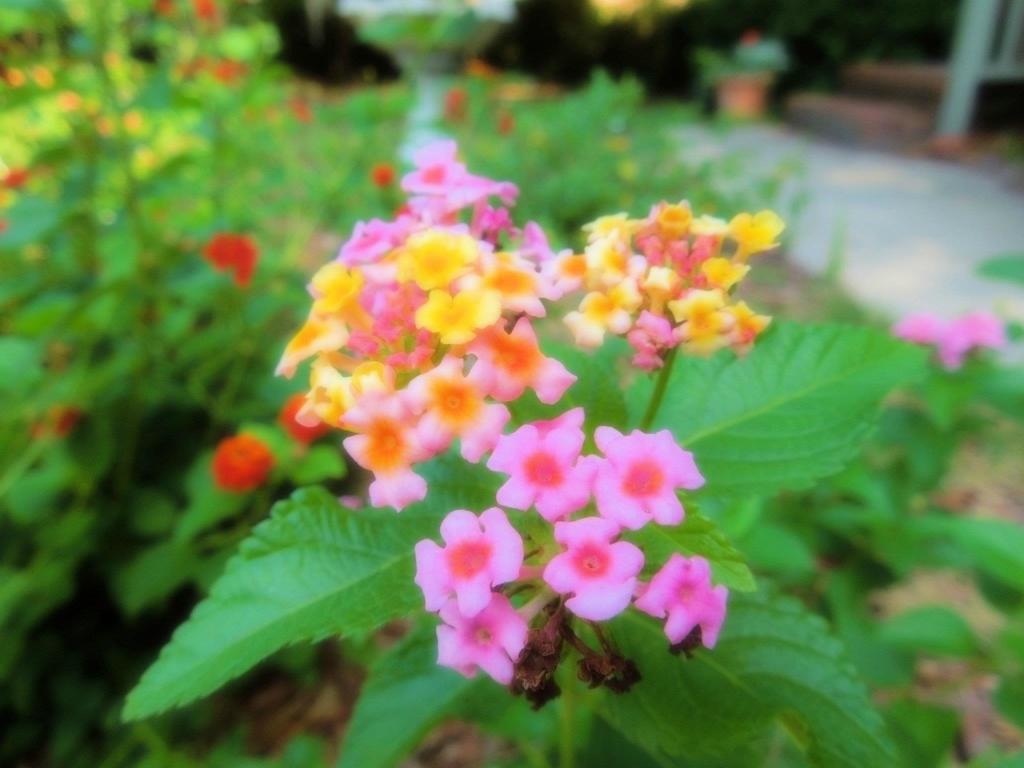
- Yuccas. These are part of the Agave family and super ea
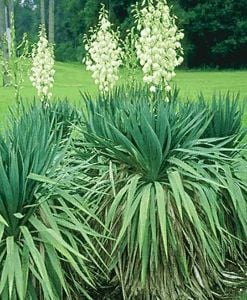 sy to grow in well-drained soil, like my sandy haven. They are native to North Carolina and aren’t real picky about lighting. I dug up mine from the woods behind my house where it was shady and planted them in the front yard where there’s direct sunlight most of the day, and they’re doing fine. Most varieties bloom once a year when they’re mature. The flowers come on tall stalks and need to be trimmed when they’re done blooming in order to encourage flowering the following year. The only downside to these plants is that their leaves are pointy and require careful consideration for placement (keep away from kids and pets). Digging them up was a battle in itself. Also, be forewarned that if you transplant a yucca, there’s a good chance the plant wil
sy to grow in well-drained soil, like my sandy haven. They are native to North Carolina and aren’t real picky about lighting. I dug up mine from the woods behind my house where it was shady and planted them in the front yard where there’s direct sunlight most of the day, and they’re doing fine. Most varieties bloom once a year when they’re mature. The flowers come on tall stalks and need to be trimmed when they’re done blooming in order to encourage flowering the following year. The only downside to these plants is that their leaves are pointy and require careful consideration for placement (keep away from kids and pets). Digging them up was a battle in itself. Also, be forewarned that if you transplant a yucca, there’s a good chance the plant wil
 l die back. Give it a month, and it will start to sprout new leaves.
l die back. Give it a month, and it will start to sprout new leaves. - Roses. These classic plants love my fast draining soil. I plant chives around them, because the herb is a natural deterrent for pests. Be forewarned, Roses take careful maintenance to keep them looking good.
- Coneflower. I planted these one year and they didn’t grow much. The next spring, I didn’t see any signs of them when the other plants started to pop up, so I wrote them off to another bad choice. Then, I went out to weed after the summer weather got hot and there they were! They’re a little slow to grow (I have them in full sun), but they keep coming back.
- Asiatic Lily. When these bloomed the year I moved into my house, I was absolutely thrilled. They’re in the sandiest, ugliest place in my yard, right next to an electrical pole beside my driveway. They have bright orange flowers and are beautiful year after year.
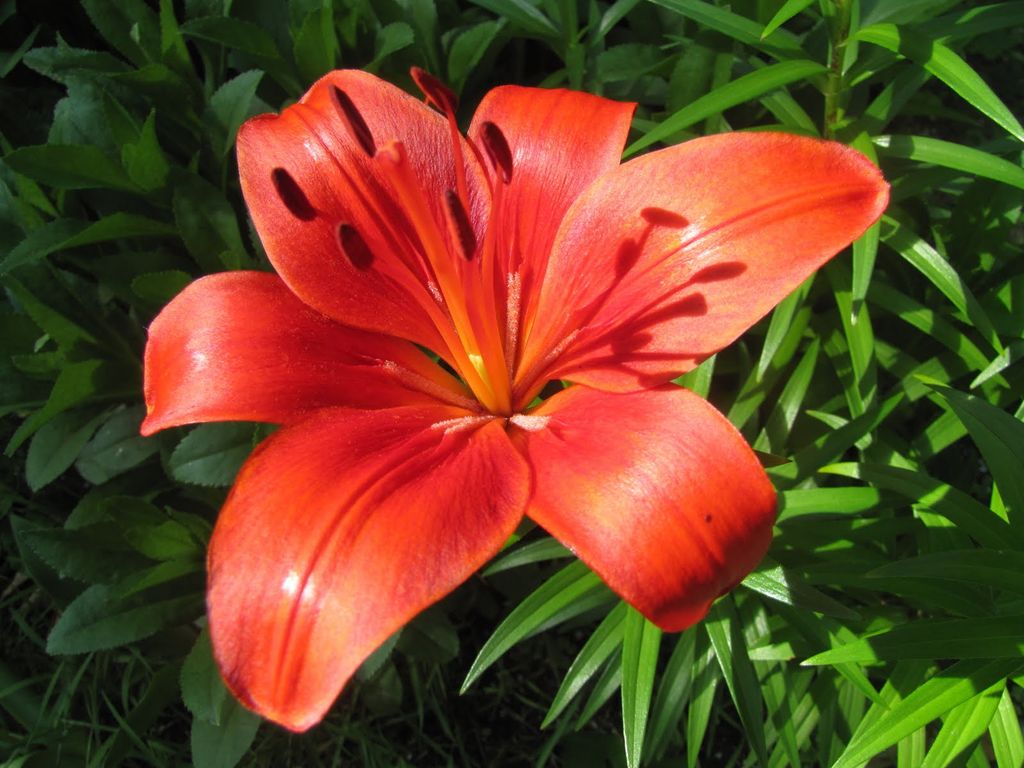
- Moss Phlox. I used this to line the portion of my garden that butts up against the driveway and it’s done very well. It’s usually the first thing that blooms in the spring and comes in pink, purple, and white flowers. I’ve treaded on it getting out of my car and it lives on unfazed.
- Rosemary. I’m pretty sure that I tilled this at one point (by accident) and it’s still coming up in my garden bed. If you like fresh herbs, definitely try this. I’ve also had really good luck with oregano and mint in some raised beds and containers, but rosemary takes the cake for direct planting in my original flower bed.

- Irises. The previous owner of my home planted these. They were all over the place where, I think, there used to be flower beds. I dug them up and put them in the bed I started when I moved in, and I’m still finding them in random places around the yard. I’m not sure if they spread that easily or if the previous owner just had a lot of them. The flowers are a vibrant blue and are only open in the morning, which is a nice treat for when I’m walk
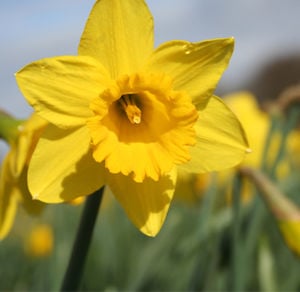 ing out the door to work. They’re spring blooming and die back in time for the Lantana to take over.
ing out the door to work. They’re spring blooming and die back in time for the Lantana to take over. - Daffodils. Their story is much the same as the irises. They’re usually the first plants to bloom and are very cold hardy. I had flowers when we got snow this past February. When they pop up, I know spring is coming.
- Crocuses. After the daffodils comes the crocuses. They don’t grow very tall, but their pretty little flowers are just high enough to make it past the leaves that fall from my giant oak tree over the course of winter.
- Hyacinths. The last of my spring bulbs are usually the hyacinths. Their large, gorgeous flowers don’t usually last very long, which is why I like to pick them and put them in water inside. Still, they keep coming back with practically no maintenance.
- Buddleia/Butterfly Bush. I planted this where a large oak tree
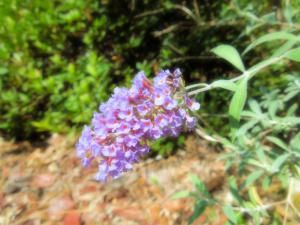 once stood, so the soil really wasn’t fantastic. It’s taken on a bit of a lean, but it’s survived through major storms and droughts. It sprouts some pretty purple blooms in the summer, which attract butterflies and bees (I’m all for supporting the bees), but I had a Rainbow Butterfly Bush in Michigan.
once stood, so the soil really wasn’t fantastic. It’s taken on a bit of a lean, but it’s survived through major storms and droughts. It sprouts some pretty purple blooms in the summer, which attract butterflies and bees (I’m all for supporting the bees), but I had a Rainbow Butterfly Bush in Michigan. - Yellow Jessamine. I haven’t had much luck with vines, so I decided to go native with Yellow Jessamine. It does well, as long as there isn’t a long drought. Interestingly, the one I planted has been very slow gro
 wing, but the one I discovered at the back of my property (after I bought the other one, mind you) is growing like crazy. I did have good luck with the potted Wisteria I bought from Lowes, but later found it’s an invasive species, so I don’t really want to recommend it. I also found the vines sold for container gardening come back and can grow quite rampant, so, again, not sure I want to recommend those either….Let’s just stick with Yellow Jessamine.
wing, but the one I discovered at the back of my property (after I bought the other one, mind you) is growing like crazy. I did have good luck with the potted Wisteria I bought from Lowes, but later found it’s an invasive species, so I don’t really want to recommend it. I also found the vines sold for container gardening come back and can grow quite rampant, so, again, not sure I want to recommend those either….Let’s just stick with Yellow Jessamine.
- Azalea Bushes. Let’s get the obvious out of the way first. The
If you’re looking for annuals, many of the traditional selections work well. I suggest shopping for plants at locally owned garden centers, like The Plant Place, Lewis Farms, The Transplanted Garden, and Zone 8 Gardens. They are more likely to carry plants that will survive in our zone. Big box companies, like Lowes and Home Depot, like to slip in plants that are borderline for other regions, just to make a sale. Also, take special note to consider pansies and flowering cabbage, which work well as color providers during the fall and winter months.
Have a suggestion for a plant or shrub/bush to try? Please share in the comments below.
[the_grid name=”Homeowner Tips”]

